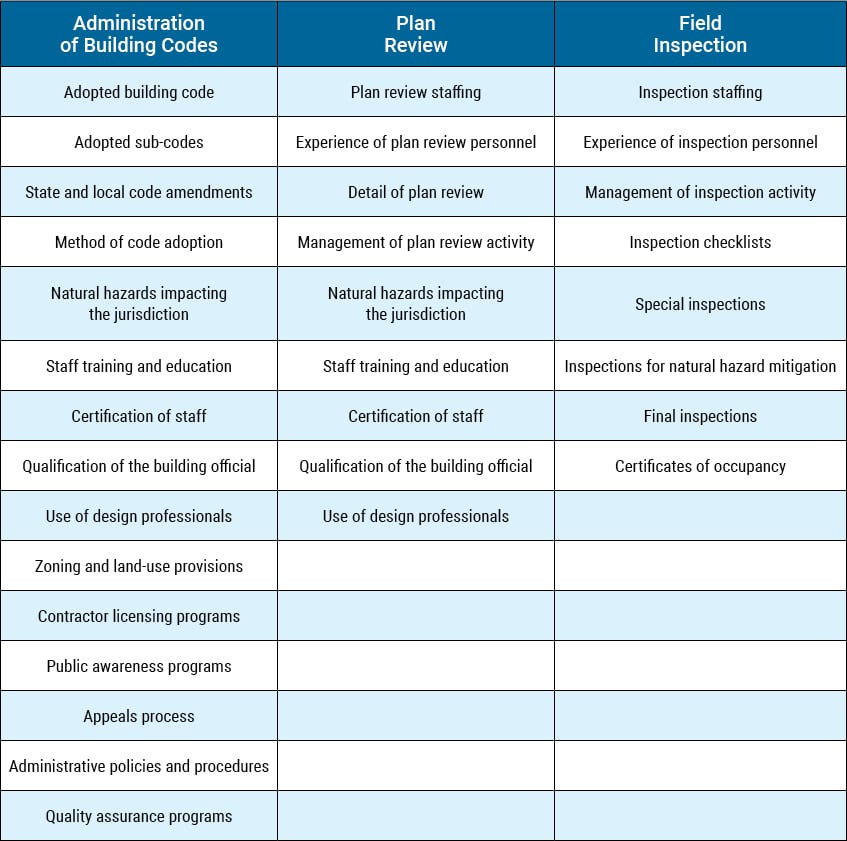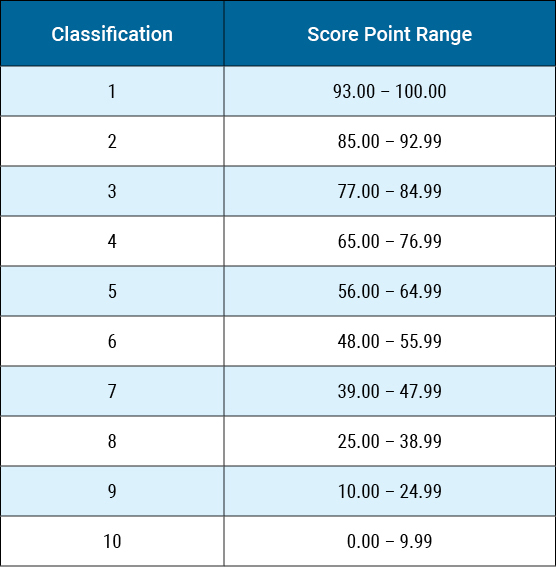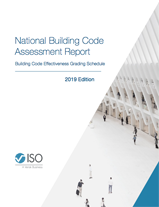BCEGS Classifications and Survey Process
What is a community’s classification based on?
Several factors are considered in every BCEGS classification. The table below lists key areas of focus but is not all-inclusive:

The values are calculated based on the terms of our BCEGS schedule to determine a score on a 0-to-100-point scale for both commercial buildings and one- and two-family residential dwellings (as shown in the table below).
Each community’s score is converted to a 1-to-10 classification: One classification for commercial lines and a second for personal lines of coverage.

What is the evaluation process?
We distribute questionnaires to building officials of all municipalities in a state. Upon completion of the questionnaire, we arrange for a trained field representative to meet at a mutually convenient time at the community site with each municipality’s building official. At that time, our representative and building official together review the questionnaire and verify the community’s capabilities. Our representative seeks clarification and obtains supporting documentation as needed.
Items reviewed during the survey include:
- Permits
- Plan reviews
- Inspections
- Responsibilities
- Training
- Certification
- Continuing education
- Budget information
- Public awareness
- Property value
How do BCEGS classifications benefit the community?
- BCEGS classifications can help identify communities that are more resilient to natural hazards and everyday perils. Resilient communities generally attract more businesses and residents.
- Policyholders in communities with effective building code programs are positioned to benefit from available premium discounts, because Verisk participating insurers can apply credits and receive information relating to building code enforcement vigor from us.
- BCEGS data and benchmarking reports offer community officials detailed information about their local code enforcement program, including regional, state, and national trends that can be used to help in their efforts to effectively manage the delivery of building safety services.
- A more favorable BCEGS classification can help a community qualify for Hazard Mitigation Grants from the Federal Emergency Management Agency (FEMA).
- BCEGS classifications are currently part of the criteria for receiving discounted flood insurance premiums from the National Flood Insurance Program (NFIP) through the Community Rating System (CRS) program.
How can a building department be best prepared for its evaluation? What resource materials should be available?
Once your community’s survey has been scheduled, you can best prepare by filling out the BCEGS questionnaire as thoroughly as possible in advance of your meeting with our field representative. The following documents are provided to assist you:
